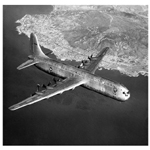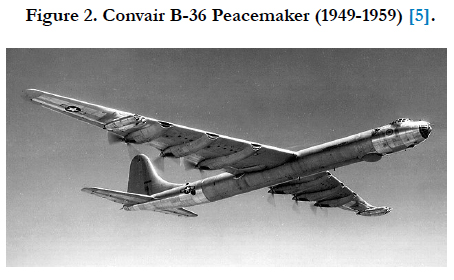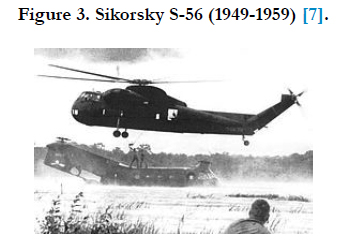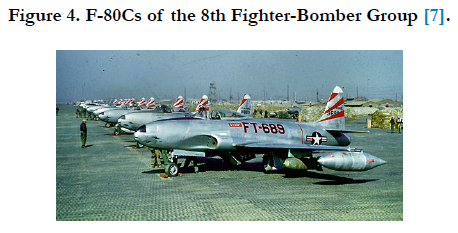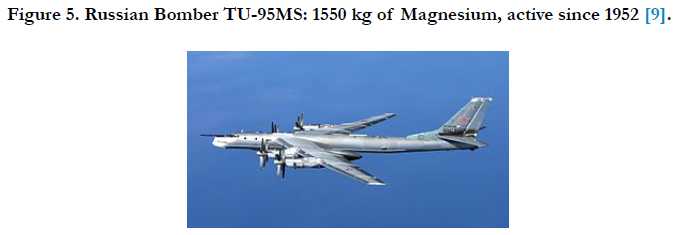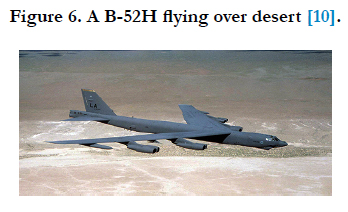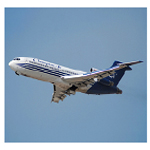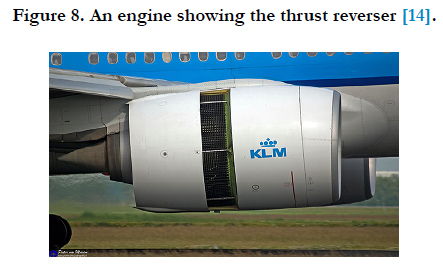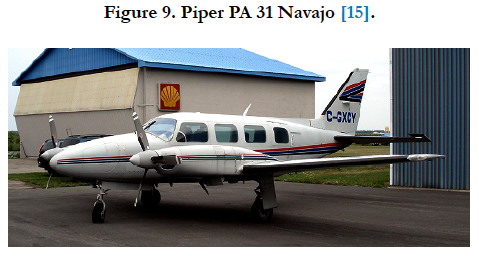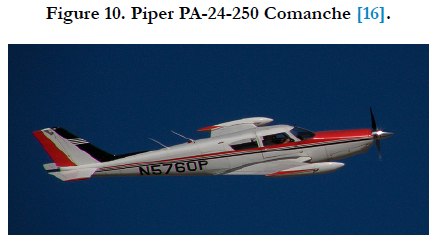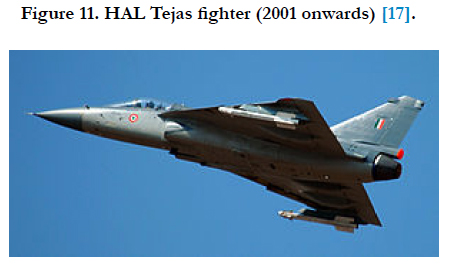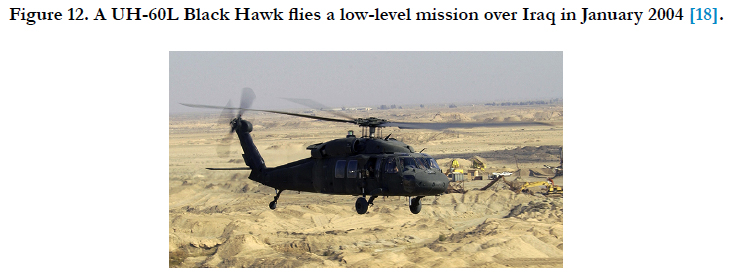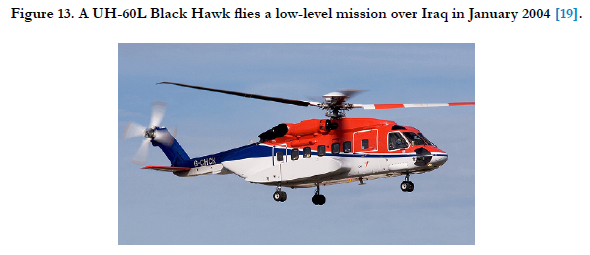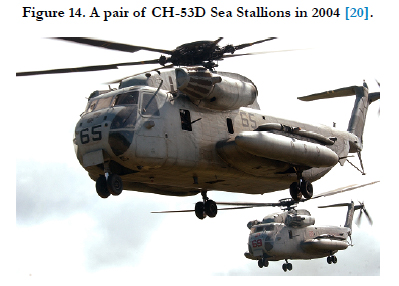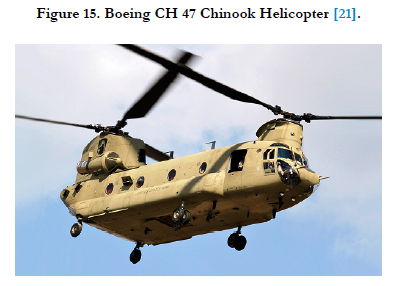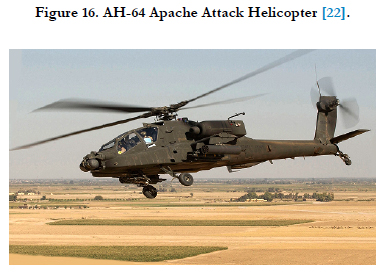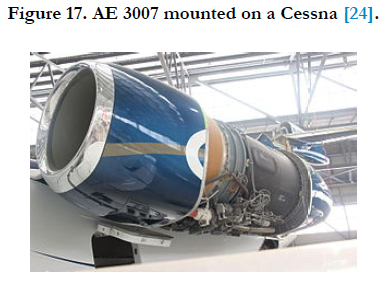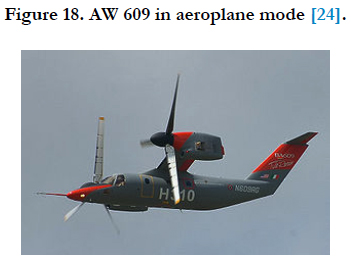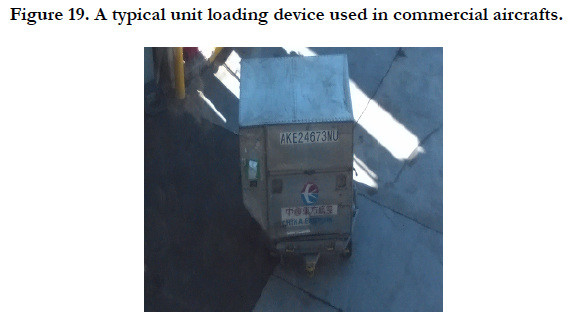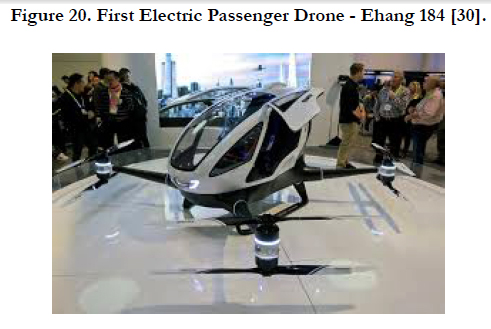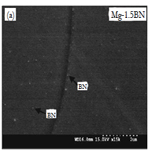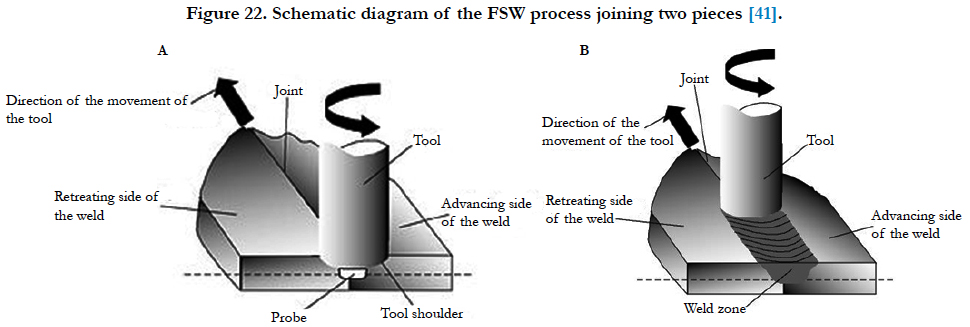The Promise of Magnesium Based Materials in Aerospace Sector
Gupta M1*, Gupta N2
1 Department of Mechanical Engineering, National University of Singapore, Engineering Drive, Singapore.
2 Department of Materials Science and Engineering, Nanyang Technological University, Nanyang Ave, Singapore.
*Corresponding Author
Manoj Gupta,
Department of Mechanical Engineering,
National University of Singapore,
9 Engineering Drive 1, 117 576, Singapore.
Tel: (65) 6516 6358
Email: mpegm@nus.edu.sg
Received: May 16, 2017; Accepted: July 26, 2017; Published: July 31, 2017
Citation: Gupta M, Gupta N (2017) The Promise of Magnesium Based Materials in Aerospace Sector. Int J Aeronautics Aerospace Res. 4(1), 141-149. doi: dx.doi.org/10.19070/2470-4415-1700017
Copyright: Gupta M© 2017. This is an open-access article distributed under the terms of the Creative Commons Attribution License, which permits unrestricted use, distribution and reproduction in any medium, provided the original author and source are credited.
Abstract
Magnesium based materials including traditional alloys, new alloys and composites (nano/metastable and syntactic) have strong potential to be used in the aerospace sector. With the rich history of usage of magnesium in aerospace sector from the Second World War onwards, it is hard to imagine why our current researchers and industrialists are still paranoid to harness the full potential of the lightest and one of the most nutritional, natural elements. Accordingly, this paper highlights the use of magnesium based materials in the aerospace sector (commercial aircraft, fighter jets, and helicopters) in the past and present. Potential future applications of magnesium are discussed. New family of magnesium based materials particularly composites are introduced along with future challenges that include joining method (friction stir welding) and combating corrosion.
2.History and Current Trends of Magnesium in Aerospace Sector
3.Anticipated Future Trends of Magnesium in Aerospace Sector
4.Innovations in Magnesium Based Materials
5.Future Challenges
6.Closing Remarks
7.References
Introducing Magnesium
Magnesium is the lightest metallic element that can be used in multiple structural applications in aerospace, electronics, automobile and sports sectors [1]. Its abundance in planet earth (6th most available in earth’s crust, 3rd most available in oceans, and 4th most abundant cation in the human body), ease of recycling, superior specific mechanical properties, high damping capability, and significant electromagnetic shielding capability are some of the attributes that warrant the widespread use of magnesium based materials in both engineering and biomedical applications. Other advantages associated with magnesium based materials include:
[a]. Low energy requirement in solidification based processing.
[b]. Ability to be processed using conventional solid state methods.
[c]. Ability to be machined faster and high tool life (normally 5-10 times longer).
[d]. Ability to be processed using conventional plastic deformation processes at speeds matching with that of conventional structural materials.
These advantages allow magnesium based materials to be integrated in engineering applications with minimal infrastructural investments and variations, a critical requirement that affects the decision making of industrialists to produce new materials. Furthermore, the declining cost of magnesium and its ability to reduce carbon footprint are the key factors that are triggering the replacement of aluminum based materials gradually and progressively over last decade. The cost factor ensures stability of market prices of the product without straining the pocket of the consumer. Similarly, the global move to cut the carbon dioxide emissions by 2 billion tons and to keep the temperature rise to within 2°C from the preindustrial levels as suggested in Paris agreement will fuel the increasing usage of magnesium based materials in very near future [2]. It is widely anticipated that magnesium will replace aluminum in 2020s in the same fashion as how aluminum replaced steels in 1980s.
History and Current Trends of Magnesium in Aerospace Sector
The aerospace sector is a rapidly growing sector that serves two critical functions:
[a]. Facilitates the transportation of humans, animals and goods.
[b]. Enhances the defense capability of a nation.
Historically, Convair XC-99 (Figure 1.[3]) built by US Air force was the largest airplane in active service in the 1940s and 1950s that used magnesium alloy skin in its airframe [4]. It was capable of carrying 45,000 kg of cargo or 400 fully equipped troops.
Convair B-36 (1949-1959) (Figure 2.) used a total of 8600 kg of magnesium (5555 kg of magnesium sheet and 700 kg of forgings) [5]. It was a strategic bomber built by Convair and operated by the US Air Force. It was capable of intercontinental flight and delivering any of the nuclear weapons available at that time.
Sikorsky S-56 (1950) (Figure 3.) used 115 kg of magnesium [6]. Its main role was as a cargo helicopter capable of carrying 26 fully equipped troops. It was mainly used by US Army and US Marine Corps. It was retired in late 1960s.
Lockheed F-80C (Figure 4.) was a jet fighter used primarily by the US Air Force and Navy. It was introduced in 1945. It was fully built of magnesium [7, 8].
Tupolev TU-95 (Figure 5.), a large strategic bomber and missile platform used about 1550 kg of magnesium [8, 9]. It was first flown in 1952 and currently serves the Russian Air Forces and Navy. It is expected to serve the Russian Air Forces until 2040.
Figure 1. The Convair XC-99 used a large amount of magnesium in its airframe. The first flight was made on 24 Nov 1947 [3].
Figure 2. Convair B-36 Peacemaker (1949-1959) [5].
Figure 3. Sikorsky S-56 (1949-1959) [7].
Figure 4. F-80Cs of the 8th Fighter-Bomber Group [7].
Figure 5. Russian Bomber TU-95MS: 1550 kg of Magnesium, active since 1952 [9].
The Russian aerospace sector was clearly as dynamic as western researchers in using magnesium in commercial aircraft with TU- 134 (1963 onwards) as a star example employing 1325 magnesium components with a total weight of 780 kg [8].
Another strategic bomber that flew for the first time in 1952 and still in service is the Boeing B-52 Stratofortress, an American aircraft Figure 6 [10]. It was used primarily by the US Air Force and used many magnesium components that lasted beyond the initial design life [11]. B-36 reportedly used 12,200 lbs. (5,534 kg) of magnesium sheet components, 1,500 lbs. (680 kg) of magnesium forgings and 660 lbs. (300 kg) of magnesium castings in the 1950s [12].
There were 1,832 Boeing 727s (Figure 7.) built between 1962-1984, which used 1,200 magnesium parts (e.g. door frames, wheels and secondary structural parts) [12]. AZ92/91/81 sand and permanent mold castings were used on this airplane [11]. No parts were rejected for fire, but corrosion was the main issue [11, 12]. Accordingly, International Air Transport Association (IATA) enacted legislation limiting the use of magnesium-based materials to non-structural parts, while keeping in mind the corrosion problems reported in the 1950s and 1960s [12].
Furthermore AZ92 A was also used in Boeing 737, 747, 757 and 757 airplanes in the thrust reverser cascade castings [11, 12] (Figure 8).
AZ91 E castings were used in the Piper Chieftan (1967-1984) (Figure 9) and Piper Comanche (Figure 10) aircrafts (1957-1972) [11, 15]. Piper Chieftan was more of a family aircraft capable of flying 5-7 passengers while Piper Comanche was able to fly three passengers [16].
Figure 6. A B-52H flying over desert [10].
Figure 7. A typical Boeing 727 aircraft that can carry up to 189 passengers [13].
Figure 8. An engine showing the thrust reverser [14].
Figure 9. Piper PA 31 Navajo [15].
Figure 10. Piper PA-24-250 Comanche [16].
Recently, Light Combat Aircraft (LCA) nicknamed as Tejas developed in India has successfully tested (2,200 hours of flight testing over 1,465 flights) gear boxes made of RZ-5 magnesium alloy. Through the use of magnesium alloy gear boxes they managed to cut its weight by 50% and cost to 1/5 (Figure 11) [17].
Sikorsky UH-60 Black Hawk (Figure 12), a medium-lift Helicopter built by Sikorsky Aircraft [18] used ZE 41 alloy in the main transmission. This was used by the defense forces of Japan, Colombia, and Turkey.
Sikorsky S-92 Superhawk, a medium lift transport/utility helicopter developed in USA (1998-present) used WE 43A in the main transmission [12] (Figure. 13).
Sikorsky CH53D heavy lift helicopter developed in USA and used by Germany, Israel and Mexico used 285 kg of AZ 91E castings [11] (Figure 14). These were introduced in 1966 and retired in 2012. They are still in service.
Boeing CH 47 Chinook, a heavy lift helicopter (Figure 15.) with the primary role of troop movement, artillery placement and battlefield resupply used ZE 41 castings [11]. This helicopter is used by the US Army, Japan and Netherland [21]. Additionally, Boeing AH 64 Apache Helicopter (attack helicopter) also used ZE 41 castings (Figure 16.) [11].
Besides these applications, magnesium based alloys such as WE 43 is used in Pratt & Whitney F119 as an auxiliary casing [12]. Pratt and Whitney Canada uses ZE 41 alloy in the PW 305 turbofan [12]. EZ33A castings are used in Rolls Royce RB 211 gearbox [11]. Rolls Royce also uses ZE 41 castings in Rolls-Royce Allison AE-3007 engine [11, 17] (Figure. 17).
Figure 11. HAL Tejas fighter (2001 onwards) [17].
Figure 12. A UH-60L Black Hawk flies a low-level mission over Iraq in January 2004 [18].
Figure 13. A UH-60L Black Hawk flies a low-level mission over Iraq in January 2004 [19].
Figure 14. A pair of CH-53D Sea Stallions in 2004 [20].
Figure 15. Boeing CH 47 Chinook Helicopter [21].
Figure 16. AH-64 Apache Attack Helicopter [22].
Figure 17. AE 3007 mounted on a Cessna [24].
Bell Augusta 609 (Figure 18.) is a twin engine tilt rotor VTOL aircraft capable of landing vertically as akin to helicopters uses WE43 castings in gear box [11]. This aircraft is targeted for VIP customers and offshore oil and gas operators [24].
Rapid growth in the aerospace sector is expected between 2011-2033 with high demands in Asia-Pacific ($2.020 trillion), Europe ($1.04 trillion) and North America ($870 billion) [25]. The use of magnesium technology is also poised to increase as in 2015 Federal Aviation Administration has allowed the use of magnesium based materials in seat constructions, provided that it meets the flammability criterion [26, 27]. This decision was long overdue considering the fact that magnesium alloys were used extensively in the aerospace sector way back from the 1940s. Assuming that aluminum alloy seats are replaced with magnesium alloys through basic redesigning, a potential weight saving of about 360 kg can be realized for a typical 117-seat Airbus 318 and up to 4,200 kg for a 700-seat Airbus A380 aircraft [28, 29]. Beyond application in seats, more applications of magnesium based materials can be envisaged in noncritical and nonstructural parts and will largely depend on the imagination and vision of engineers.
Figure 18. AW 609 in aeroplane mode [24].
Experiences from the past and emerging current trends clearly indicate the dominant role magnesium based materials are going to play in both commercial fighter aircraft. None of the reports in the open literature show or indicate any technical issues that undermined the safety through the use of magnesium based materials in the aerospace sector [8].
Anticipated Future Trends of Magnesium in Aerospace Sector
Besides the applications of use of magnesium in parts (structural or nonstructural), use of magnesium can also be seen in some unconventional areas such as in unit loading devices and unmanned aerial vehicles.
A unit loading device (Figure 19.) is a pallet or container used to load luggage and freight on an aircraft. Currently, aluminum based alloys are used in the construction of unit loading device. Replacement with magnesium based materials ensures ~33% weight saving. Use of magnesium based alloys will also potentially be cheaper than ULDs made using composite materials.
The market for unmanned aerial vehicles such as drones is expanding rapidly in recent times. They are used in merchandise delivery, recreation, defense, monitoring of critical areas and for research [29]. They are normally run on batteries. Magnesium can be used in drones as a lightweight option capable of providing more airtime than the use of conventional aluminum alloys and polymer based composites. Recently, in 2016, China has introduced passenger drones (Figure. 20) that are under experimental trials to assess the reliability of operations [30]. Its use is also anticipated to expand into air-taxis [31] and air ambulances [32].
Figure 20. First Electric Passenger Drone - Ehang 184 [30].
Innovations in Magnesium Based Materials
Currently, the number of magnesium based alloys for selection are extremely limited with Magnesium Elektron making visible impact in developing and marketing new alloys. Rare earth elements such as yttrium, cerium, gadolinium and lanthanum are a natural choice to mitigate ignition and corrosion of materials [33]. Tremendous academic research is also ongoing to harness the use of other elements such as aluminum, zinc, and calcium as these are most effective and more environment friendly when compared to rare earths [1, 34]. Efforts are also made to use the fundamentals of composite technology to develop nanocomposites [35], metastable composites [36], and syntactic foams [37] (Figure 21). The use of reinforcement at nano length scale (nanocomposites) has the capability to enhance strength, ductility, creep, fatigue, machinability, ignition, and dry/wet corrosion resistance [38]. Similarly, metastable composites containing micron length scale metal based amorphous reinforcement have shown the capability to enhance hardness, damping and strength properties. Syntactic foams that contain hollow particles, including cenospheres (hollow fly ash particles - an industrial waste from coal fired power plants), exhibit superior compressive and energy absorption behavior. Ductility, which is a reflection of deformability has been matched with that of aluminum alloys, paving the way for easy secondary forming (such as rolling forging, extrusion, etc.) of a new generation of magnesium based materials. While the innovations in material developments are ongoing, much more efforts are required for at least another 10 years, in authors’ opinion, to develop a wide spectrum of magnesium based materials that exhibit a diverse combination of properties that are required by end applications making the life of materials selectors easy.
Figure 21. Microstructure of: a) Mg-BN nanocomposite, b) Mg-SiO2 syntactic composite and c) Mg-Ni60Nb40 (at. %) particle reinforced metastable composite.
Future Challenges
Four areas which need significant attention for enhanced reliability of structure and survivability of pilots and passengers in a typical airborne vehicle are: a) flammability/ignition resistance, b) surface protection from corrosion, c) joining with different metal/ alloys, and d) adoption by metal producing and metal forming industry.
The ignition/flammability is more of a psychological than a real factor [8]. Ignition resistance of bulk magnesium based materials is reasonable, with the ignition temperature of small magnesium pieces at about 580°C. To compare this, the maximum service temperature of epoxy based composites used in aerospace structures is ~ 220°C [39]. Authors in Ref. 6 have indicated that there are neither precedents of aircraft accidents because of magnesium ignition, nor are there applications of magnesium in aircraft compromises on the requirements of fire safety for passengers. To allay this fear and misconception, in the last decade tremendous improvements have been made to improve the flammability through compositional adjustments [40] and surface protection through both composition adjustment and through the use of coating technology [8]. With the ignition temperature greater than 700°C (Mg melting temperature is = 650°C) commonly realized in new generation magnesium alloys, it is anticipated that the use of magnesium based materials is bound to increase further and exponentially.
Corrosion is seen as a major problem with the use of magnesium alloys in the past [8, 11, 12]. Bare magnesium based materials corrode faster than aluminum based materials as magnesium is one of the most electrochemically active element located almost at the bottom of EMF and galvanic series and exhibit a PBR ratio of ~0.8. This makes magnesium susceptible to corrosion in both dry and wet conditions. Compositional adjustments and development of coating technologies are the two possible solutions. Use of rare earth have shown promising results while the development of coatings such as PGA ALGAN 2M, composite coatings Gardobond X4729 from Chemetall GnbH and Magoxide and Magpass from AHC Oberflachentechnik [8] have shown the promise in recent past by bringing magnesium based materials at par with aluminum based materials from corrosion perspective.
Joining of magnesium based materials with other materials is another challenge where new joining techniques such as solid-state friction stir welding (FSW) are being investigated and have shown very promising results. This welding process uses a non-consumable tool to join two objects (Figure. 22) [41]. Unlike conventional melting based welding FSW can control the microstructure much better and can avoid the formation of brittle intermetallics in heat affected zone. In view of its advantages it has already found use in shipbuilding and trains. For example, FSW is utilized in Delta II, Delta IV, and Atlas V expendable launch vehicles, space shuttle external tank as well as Falcon 1 and Falcon 9 rockets. Floor panels for Airbus A400M military aircraft are now made by Pfalz Flugzeugwerke and Embraer used FSW for the Legacy 450 and 500 Jets. Friction stir welding is also employed for fuselage panels on the Airbus A380 [41].
Figure 22. Schematic diagram of the FSW process joining two pieces [41].
Besides the properties requirement, another challenge is to draw the attention of industry who can mass produce and market both conventional and new generation magnesium alloys at reasonable cost so that the volume sale can increase along with the application of this novel family of materials. Here, the role of researchers is equally important to provide the industrialists with the desired skill set to produce and form magnesium based materials. POSCO in South Korea has recently set an example by building its expertise in rolling magnesium into thinner and wider sheets for application in the transportation sector.
In addition to above challenges, high profile programs such as FP6 AEROMAG (Magnesium for Aerospace Applications), IDEA, MagForming and EXOMET pursued by European countries are the need of the day worldwide to take magnesium based materials to the next level of applications in the aerospace sector [8, 12].
Closing Remarks
Magnesium is natural element, which has the potential to reduce the technological stress imposed on the environment and the health stress imposed on living beings through the use of toxic elements such as aluminum. The use of magnesium is not only useful for our generation but also for future generations. The aerospace sector has used this material from the 1940s and can easily learn from its past experience and blend it with modern developments in magnesium technology to lead by example. While the Federal Aviation Administration has allowed the use of magnesium based materials in seat structures in 2015, more applications can be envisioned as highlighted in this article and will further depend on the combined wisdom of aviation and materials engineers.
Acknowledgements
Authors like to sincerely thank the reviewer of this manuscript for making tremendous efforts to patiently improve the language and scientific accuracy of this article.
References
- M Gupta, Sharon Nai (2011) Magnesium, Magnesium Alloys and Magnesium Composites. John Wiley. 1-257.
- http://www.npr.org/sections/thetwo-way/2017/06/01/531048986/so-whatexactly-is-in-the-paris-climate-accord
- https://en.wikipedia.org/wiki/Convair_XC-99
- http://cdn.loc.gov/master/pnp/habshaer/tx/tx0700/tx0728/data/tx0728data.pdf
- https://en.wikipedia.org/wiki/Convair_B-36_Peacemaker
- https://en.wikipedia.org/wiki/Sikorsky_CH-37_Mojave
- https://en.wikipedia.org/wiki/Lockheed_P-80_Shooting_Star
- I Ostrovsky, Y Henn. Present state and future of magnesium application in aerospace industry. International conference - “New challenges in Aeronautics”, ASTEC’07, Aug 19-22, 2007, Moscow.
- https://en.wikipedia.org/wiki/Tupolev_Tu-95
- https://en.wikipedia.org/wiki/Boeing_B-52_Stratofortress
- B Gwynne, P Lyon. Magnesium Alloys in Aerospace Applications, Past Concerns, Current Solutions. Triennial International Aircraft Fire & Cabin Safety Research Conference, Oct 29-Nov 1, 2007.
- Pekguleryuz MO, Kainer KU, A Kaya (2013) Fundamentals of Magnesium Alloy Metallurgy, Woodhead Publ. 287-288.
- https://en.wikipedia.org/wiki/Boeing_727
- http://wikivisually.com/wiki/Thrust_reverser
- https://en.wikipedia.org/wiki/Piper_PA-31_Navajo
- https://en.wikipedia.org/wiki/Piper_PA-24_Comanche
- https://en.wikipedia.org/wiki/HAL_Tejas
- https://en.wikipedia.org/wiki/Sikorsky_UH-60_Black_Hawk
- https://en.wikipedia.org/wiki/Sikorsky_S-92
- https://en.wikipedia.org/wiki/Sikorsky_CH-53_Sea_Stallion
- https://en.wikipedia.org/wiki/Boeing_CH-47_Chinook
- https://en.wikipedia.org/wiki/Boeing_AH-64_Apaches
- https://en.wikipedia.org/wiki/Rolls-Royce_AE_3007
- https://en.wikipedia.org/wiki/AgustaWestland_AW609
- Current Market Outlook 2014-2033, Boeing, 2014.
- F Czerwinski (2014) Controlling the Ignition and Flammability of Magnesium for Aerospace Applications. Corrosion Sci. 86: 1-16.
- A Stachel (2016) Light Weight Alloys in Seat Design, Influence of Magnesium in Seats.
- https://www.magnesium-elektron.com/news/magnesium-elektron-welcomes-new-standard-use-magnesium-commercial-aircraft-seats/
- https://www.agcs.allianz.com/assets/PDFs/Reports/AGCS_Rise_of_the_drones_report.pdf
- https://en.wikipedia.org/wiki/Passenger_drone
- http://www.airspacemag.com/articles/fly-through-air-greatestease-180962272/
- http://www.dailymail.co.uk/sciencetech/article-4171008/Flying-cars-development-vary-significantly.html
- Sravya Tekumalla, Sankaranarayanan Seetharaman, Abdulhakim Almajid, Manoj Gupta (2015) Mechanical Properties of Magnesium-Rare Earth Alloy Systems: A Review. Metals. 5(1): 1-39.
- M Gupta, GK Meenashisundaram (2015) Insight into Designing Biocompatible Magnesium Alloys and Composites. SpringerBrief, US.
- M Gupta, WLE Wong (2015) Magnesium-Based Nanocomposites: Lightweight Materials of the Future. Mate Charact. 105: 30-46.
- S Jayalakshmi, M Gupta (2015) Metallic Amorphous Alloy Reinforcements in Light Metal Matrices, SpringerBrief, USA.
- V Manakari, G Parande, M Gupta (2016) Effects of Hollow Fly Ash Particles on the Properties of Magnesium Matrix Syntactic Foams- A Review. Mate Perf Charact. 5(1): 109-124.
- Manoj Gupta, Sankaranarayanan Seetharaman (2017) Magnesium based Nanocomposites for Cleaner Transport. Nanotechnology for Energy Sustainability. Wiley-VCH, Weinheim, Germany.
- CES Edupack (2016) Aerospace Database (Software) Granta Design Ltd, Cambridge, UK.
- Sravya Tekumalla Manoj Gupta, An Insight into Ignition Factors and echanisms of Magnesium Based Materials: A Review. Mate Des. 113: 84-98.
- https://en.wikipedia.org/wiki/Friction_stir_welding.


